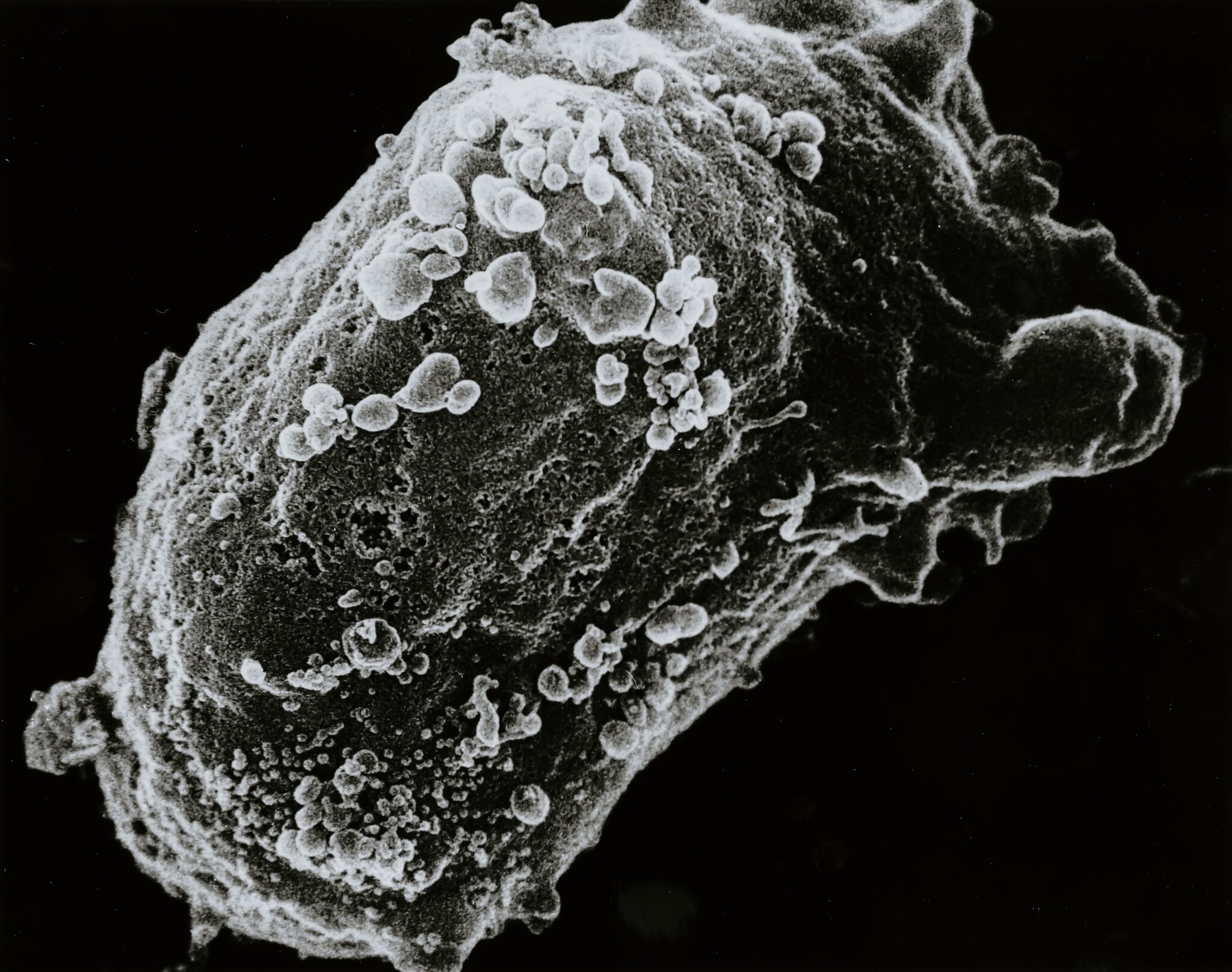Human Immunodeficiency Virus, HIV is the deadliest virus that directly attacks the immune system leaving it unable to fight off illness. Its infection progresses through stages starting with flu-like symptoms followed by an asymptomatic stage with low virus levels, which can last for years. Later persistently swollen lymph nodes and other symptoms develop, leading to severe immunodeficiency, life-threatening infection, AIDS, and Acquired immune deficiency syndrome. The decline in the immune system makes the person more prone to infections and cancers. HIV can be transmitted through direct contact with body fluids, such as sharing needles, sexual transmission, and from mother to child during childbirth or breastfeeding.
History
The first case of HIV was discovered in 1980 when a cluster of patients with rare types of pneumonia was reported among gay men in Los Angeles. Since then, more than 84.2 million individuals have been infected with the virus resulting in 40 million deaths worldwide. The development of treatment for HIV has been an ongoing process for many decades. Antiretroviral treatment is the commonly given therapy for HIV/AIDS. But this treatment only suppresses the replication of the virus, thus improving the immune system. There was no cure for the complete remission of HIV, until the discovery of Stem cell transplantation.
Breakthrough in HIV Treatment
Scientists found stem cell transplantation can treat various types of cancers. Recently they discovered that it could be used to cure AIDS. Stem cells are specialized cells that can transform into different types of cells.
“Stem cells are like superheroes, capable of wielding the power of regeneration and healing in our body, just like the Avengers saving the world from destruction.”
Stem cell transplantation is considered the most promising treatment for HIV. One of the significant benefits of stem cell transplantation for HIV treatment is that it offers a potential long-term cure rather than just managing the virus with lifelong antiretroviral therapy. Additionally, stem cell transplant has the ability to reverse the damage occurred by HIV to the immune system, which can potentially lead to complete restoration of the immune system.
Demystifying the Mystery
HIV attacks a genus of immune cells called T-cells (a type of white blood cell) responsible for fighting against bacterial and viral infections by recognizing and attacking them. In Stem cell transplant, the T cells of infected patients are replaced with the involves replace with the healthy donor who is immune to HIV infection. The immunity comes from the rare mutation which develops resistance against HIV. When these new T cells are replaced with the infected T cells in the body of the patient. They start to attack the virus and prevent it from replication. Eventually, the virus becomes cleared from the body of patients, and these patients are considered cured of HIV.

Successful Treatment of HIV
The first person cured of HIV by stem cell transplantation was Timothy Ray Brown, also known as the “Berlin patient”. He had both HIV and leukemia. His doctors decided to give him a stem cell transplant from a donor who is immune to HIV, hoping it would cure his leukemia and HIV. After the transplant, his leukemia went into remission, and his HIV was wholly cured.
He remained HIV-free for more than a decade. After that, another patient was cured of HIV by a stem cell transplant HIV-resistant mutation. He received stem cells from a donor having the same HIV-resistant mutation. Several clinical trials are currently underway to investigate the efficacy of treatment.
Conclusion
While stem cell transplantation is a promising treatment for HIV, it has its own complications. The procedure is expensive and invasive and involves the risk of complications, such as secondary infections and graft versus host disease. Graft versus host disease occurs when the donor cells attack the recipient body, which can be life-threatening. Moreover, finding a suitable donor with a rare genetic mutation that makes them resistant to HIV can be difficult as it’s a rare mutation and occurs in about 1% of the population.
Stem cell transplant is still a relatively new experimental approach for HIV treatment; the ongoing research and development in this area is a promising sign for the future of HIV and potential cures. As more research and clinical trials are conducted, we may be able to see breakthroughs in advancement in the use of stem cells to treat HIV and other diseases.
REFERENCES
- Hütter, G. “Stem Cell Transplantation in Strategies for Curing Hiv/Aids.” [In eng]. AIDS Res Ther 13, no. 1 (2016): 31. https://doi.org/10.1186/s12981-016-0114-y.
- Justiz Vaillant, A. A., and P. G. Gulick. “Hiv Disease Current Practice.” In Statpearls. Treasure Island (FL): StatPearls PublishingCopyright © 2022, StatPearls Publishing LLC., 2022.
- Kandula, U. R., and A. D. Wake. “Promising Stem Cell Therapy in the Management of Hiv and Aids: A Narrative Review.” [In eng]. Biologics 16 (2022): 89-105. https://doi.org/10.2147/btt.S368152.
- Kuritzkes, Daniel R. “Hematopoietic Stem Cell Transplantation for Hiv Cure.” The Journal of Clinical Investigation 126, no. 2 (02/01/ 2016): 432-37. https://doi.org/10.1172/JCI80563.
- Max Roser and Hannah Ritchie (2018) – “Hiv / Aids”. Published Online at Ourworldindata.Org. Retrieved From: ‘Https://Ourworldindata.Org/Hiv-Aids’ “
Also, read: HIV in Pakistan – An alarming Threat
Authors: Sadaf Sarfraz, Dr. Muhammad Mustafa

Sadaf Sarfraz, currently a lecturer, holds an MPhil in Molecular Pathology and Genomics, complemented by a BSc in Medical Laboratory Technology. Contributing as a healthcare writer at Scientia-Pakistan, she passionately engages in calligraphy and art.

